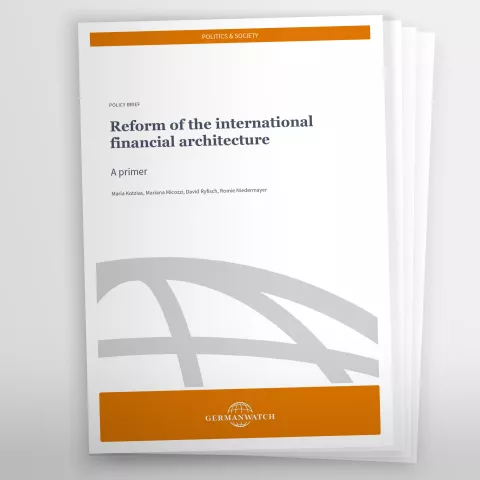
The emerging polycrisis is challenging governments and institutions around the world. Especially countries in the Global South lack the financial capacity to address the current challenges and simultaneously prepare their nations for the impacts of climate change. The existing international financial architecture has so far been unable to provide the necessary financial resources. At the same time, recent reports from the IPCC and expert groups confirm the need for a substantial increase in financial resources for developing countries by 2030.
There are three major reform proposals that address different institutions within the international financial architecture: the Bridgetown Initiative, the reform of the multilateral development banks, most prominently of the World Bank Group, and the implementation of the recommendations of the G20 Capital Adequacy Framework (CAF) Review. The proposals aim to restructure the institutions involved, to mobilise financial resources to address the immediate challenges (such as the cost of living crisis), and to enable the transition of economies to a low-carbon, climate-resilient pathway in the medium and long term.
This primer introduces the proposals presented and provides an overview of the main institutions and actors involved in the process in Germany.




